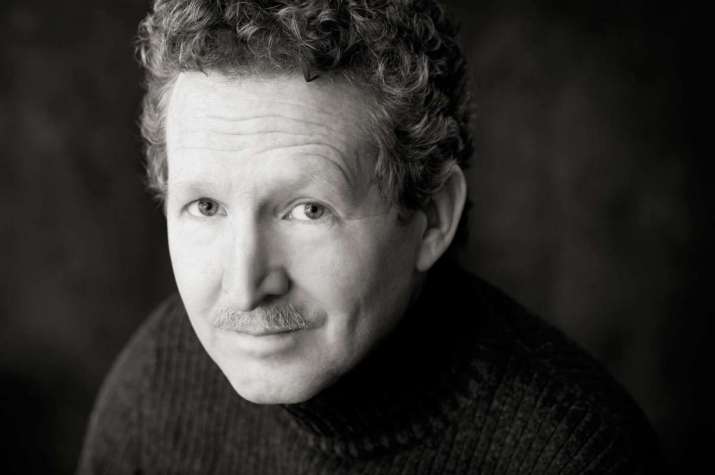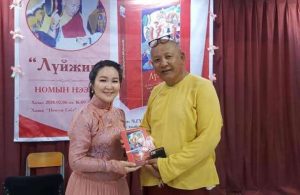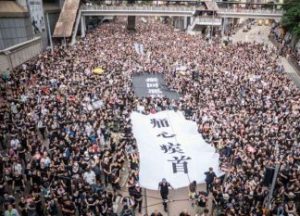
For this month’s article in her Buddhism in America column, Harsha Menon continues her conversation with Dr. Donald S. Lopez Jr., one of the leading scholars of Buddhism in the United States.
Buddhistdoor Global: Prof. Lopez, what about the question of impact in terms of when young scholars are entering the job market and thinking about their own marketability and having an impact outside of Buddhist studies, or even outside of the academy, how do you see that playing out?
Dr. Donald S. Lopez Jr.: Well, I think that has become just a practical problem, because there are so few jobs right now, as you know, after the stock market crash [of 2008]. So many places just lost positions, so you see a very sharp drop off of humanities positions in general. Religious studies has done a little bit better vis-à-vis other disciplines, but it has never really come back to what it was pre-2008. What we are seeing is young scholars competing with people who have been out three or four years, so we have a real backlog of scholars, which has caused us to think about what else someone could do if they are not going into an academic position.
I think the impact question is, in many ways, a function of this economic reality. Because to have scholars teaching Buddhism in every college and university in North America and teaching about Buddhism—an Introduction to Buddhism every semester every year, that has a huge impact on society that can really be life-changing for students. Whether they become a Buddhist or not is immaterial, they are exposed to ideas that can completely switch the way they think about things and that often has a very long-lasting effect on their perspective. That is the impact that I would like to see and see that continue and, in society more largely writ, I think that is evolving in a way.
BDG: Looking at your work and using Cornell West’s idea of the public intellectual, do we have yet a Buddhist public intellectual? Many people look to yourself for that role.
DSL: People have said that to me. I certainly don’t think of myself in that way, but I do think there is a need for all of us in Buddhist studies to be able to talk about the tradition accurately—to talk about its history and to be able to dispel the many stereotypes that exist about Buddhism. In many ways, Buddhism is a lot more interesting than the stereotypes it’s portrayed as being. Buddhism is a lot more sophisticated and much more nuanced. It has a much more profound philosophy than is typically represented.
So if there is to be the Buddhist public intellectual, that is the person who is able to find a way to portray that profundity and portray that nuance in a way that is still accessible in a different kind of public discourse.
BDG: If there were, say, a young aspiring PhD student in Buddhist studies who didn’t just see themselves in the academy, yet aspired from the beginning toward a career that included public engagement, what advice would you give them?
DSL: I do think it’s all about finding a voice and that voice is really about finding a prose style. Buddhism can seem very hermetic. We have our own lingo that we speak to each other and you have to learn that lingo, which becomes almost like a secret language of the initiate in which we have a specialized vocabulary to talk about these things, and those things do not translate very well without a lot of work. And so, in some ways, we think of Buddhism as a religion of translation. It has always been, because the Buddha told his followers not to put his teachings into verses that would just be memorized and chanted, but to always teach in the vernacular. And so that has lead to Buddhism being this incredible process of translation in every sense of the term that has continued from the very beginning.
Pali is an artificial language that was invented so that different parts of India could speak to each other, and that translation process has to continue to the present day with the translation from this sort of Buddhalogical English into a more normal sort of English, or whatever European or Asian language one is speaking. The challenge is to take that vocabulary and speak so fluently among ourselves and find a way to translate that into something that almost anybody could understand without losing the particular nuances and sophistication that we are trying to convey, so that the tradition doesn’t just level out into something much less interesting.
BDG: In reflecting on the origins of Buddhist studies in North America, was there a change, post 1965? I am thinking of Diana Eck’s work in which she notes the changes in demographics when immigration laws opened up the United States. Were there suddenly students in the university setting looking for Buddhism and did that have any kind of impact?
DSL: Yes, that is a whole other fascinating story. We have Asian immigration. Of course, there have always Chinese Buddhists and Japanese Buddhists in North American since the 19th century. Then, after Vietnam, we have Vietnamese Buddhists, and then Tibetans started coming. When we look at people like Geshe Wangyal, Suzuki Roshi, all of these founding figures. They were brought in to basically do funerals for the local community. They were performing the traditional role of a Buddhist monk or teacher and not teaching anybody meditation, but then people found out that Geshe Wangyal was in Freehold New Jersey with these Kalmuks and Suzuki Roshi was in San Francisco with these Japanese immigrants, and so they asked them to teach them what monks do.
It’s strange, we have this phenomenon of the immigrant Buddhist who is typically doing what lay Buddhists have done over time, which is support the sangha through their dana. Then we have these non-immigrant Buddhists who are going to these monks and saying, teach us about emptiness and zazen and all the kinds of things that professional monastics do that lay Buddhists never did. And then this entire Vipassana thing has its own very modern story going back to Burma [Myanmar].
BDG: Last question: if you were a first year Buddhist studies PhD student today, what would you want to study?
DSL: You know, I would do pretty much what I did. I think all of us wish we had more time to study languages. It’s a real slog; these are difficult languages and it takes a lot of time. We really admire those who can work in Sanskrit and Pali and Chinese and Japanese and Tibetan. That was the old model of people like Louis de La Vallée-Poussin, some of the founders of the field. I have found my own work in Tibetan Buddhism to be very rewarding, and no matter which field you enter there are lifetimes of work to do. So it’s not as if there is not a topic to be explored. There is more than one could ever do, and so that is one of the nice things about Buddhist studies—despite all the good work that has been done, we are just beginning to translate texts and read commentaries and understand the way things work, and to know the history. It’s really at a pretty early stage despite all the work that has been done.
BDG: That’s wonderful. Prof. Lopez, thank you very much.











